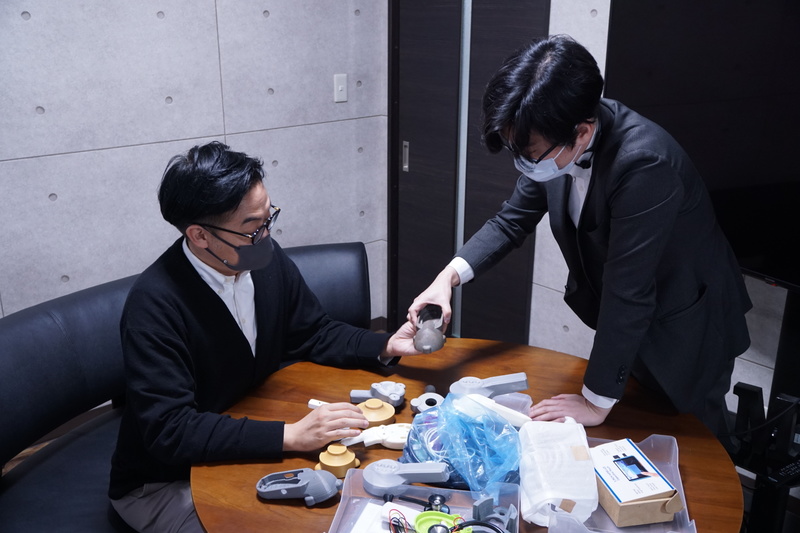Interviews

The Steth♡scope: Bringing Innovation to Telemedicine and Diagnostic Support (Part 2)
Shimpei Ogawa
Dr. Shimpei Ogawa’s Steth♡scope was born from his original Super Stethoscope, but he found his experience in the INNO-vation Program to be quite different than what he had anticipated.
Interviewer & Japanese Writer: Yamamoto Takaya; Translation & Editing: Matthew Cherry

CEO of AMI, Inc., and creator of the Super Stethoscope, Shimpei Ogawa, alongside the company’s Strategic Advisor Masashi Omuro
Dr. Shimpei Ogawa had an epiphany while continuing the development of his Super Stethoscope. He realized that this was a device that could be used to measure EKG and heartbeat data simultaneously, utilizing that data for the early detection of the causes of heart failure, such as aortic valve stenosis (AS).
Detection of heart disease isn’t the only information that can be gathered from a heartbeat. Fluctuation of the heartbeat differs depending on which nerves are predominant, the sympathetic or parasympathetic. If it were possible to analyze this heartbeat data with AI and achieve a quantification of the autonomic nervous system, the overall condition of the heart could be seen at any given time.
Dr. Ogawa applied to the 2017 INNO-vation Program with the hope of bringing his Super Stethoscope technology into its Steth♡scope phase. Its innovative quality was given high praise by the program supervisors, and he was selected for the Disruptive Challenge.
“The program supervisors evaluated not only the Super Stethoscope we had created but the worldview that came along with it. I was told that this idea had the potential to change the world. That really gave me a lot of encouragement,” Ogawa reflected.
In order to develop the Steth♡scope, Dr. Ogawa first had to collect heartbeat data from the medical institutions he was involved with. He found himself up against his first major hurdle.

Current prototype (not yet approved for medical use or sale)
The Steth♡scope is a device that reads fluctuations in heartbeat data to uncover the present condition of the heart. Trends in heart rate variability have a long span, so there is a need for the device to listen to the chest for a period of 4-5 minutes to capture accurate data. This was in contrast to the Super Stethoscope, which was originally made to detect abnormalities in heart rates at a rapid pace and only required a listening period of about 10 seconds.
“The Super Stethoscope was made with the concept that it didn’t need to continually listen to the heart and could capture data within a short amount of time. The Steth♡scope on the other hand requires about 4 to 5 minutes of listening time, so there was a need to make it more like a wearable device than something you hold up to the chest. We first thought that we could use existing, common hardware to analyze the data and that we would only need to change the software. We soon realized, however, that completely different hardware would be needed to develop the device,” Ogawa explained.
The size, shape, and internal mechanisms of the Super Stethoscope all had to be redone from scratch in order to make a device capable of analyzing heartbeat data for a 4-to-5-minute span. Realization of the Steth♡scope seemed more elusive than ever.
Dr. Ogawa feels that his time within the INNO-vation Program will become nourishment for his future. “In the future, I’d like to bring the Super Stethoscope into home medical care and telemedicine to be used for heart monitoring. If I’m able to achieve that, I’m certain the research I conducted on taking heartbeat data over long periods of time will have been a useful contributing factor.”
In Part 3, we’ll ask Dr. Ogawa about his prospective developments after the INNO-vation Program.
Part 3 coming July 11th, 2022
Dr. Shimpei Ogawa’s Profile

